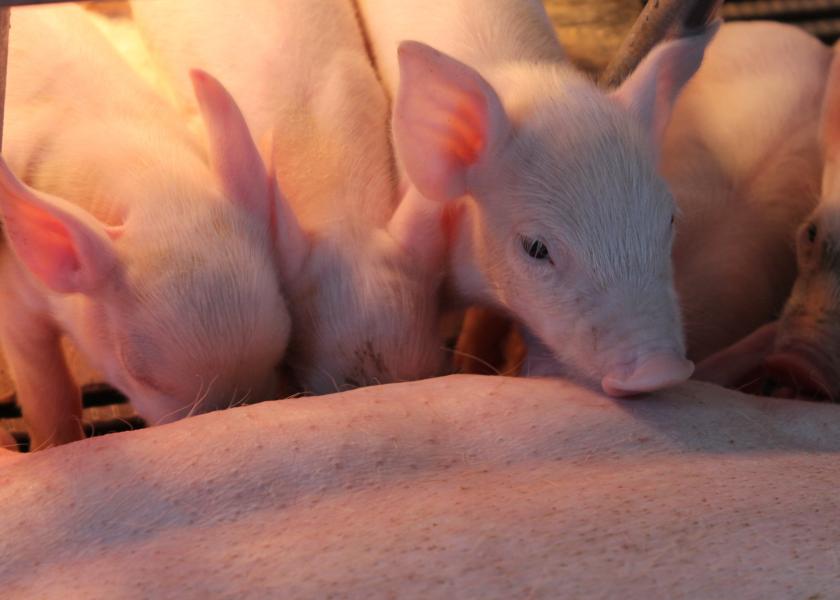Swine Health Information Center Will Stay Open for Business

The Swine Health Information Center (SHIC) is staying open – and that’s good news for the swine industry, says Gene Noem, a pig farmer from Iowa.
On Tuesday, the National Pork Board (NPB) Board of Directors approved a two-year extension of SHIC, originally formed on July 1, 2015, with the understanding that it would sunset on July 1, 2020.
After the presentation and approval of SHIC’s 2019 Progress Report on Tuesday, the NPB Board of Directors voted to extend the project for two more years, using SHIC’s existing funds, according to a SHIC release.
“SHIC has done a great job of determining priorities and spending money appropriately,” says Noem, a member of the NPB Board of Directors serving on the SHIC Board. “I’m very appreciative of the expertise recruited to work on the SHIC Board – veterinarians and specialists who understand the production business. From proof of concept for certain diagnostic tests to monitoring the evolution of seemingly significant swine diseases around the world, they are focusing on things that are truly helping the industry.”
The board also agreed to continued consideration of future funding and coordination beyond the two-year extension.
“When SHIC was started in 2015, it was with the understanding that it had to show value and return on the investment in order to continue after the five years were done,” says Paul Sundberg, SHIC executive director. “Thanks to the hard work of the SHIC Board of Directors and the many people in the working groups, the value has been recognized. That’s very much appreciated and it’s very good news that the project has been extended for two more years.”
SHIC Highlights 2019 Results
There’s no question that African swine fever (ASF) required significant resources in 2019, according to the 2019 SHIC Update. However, this did not happen at the expense of continuing SHIC’s mission to protect and enhance the health of the U.S. swine herd through coordinated global disease monitoring, targeted research investments that minimize the impact of future disease threats, and analysis of swine health data.
Here are a few highlights from the 2019 report.
1. Preparedness Activities on Behalf of U.S. Swine Herd Health
-Developed the Diagnostic Assay Catalog for detection of emerging disease
-Researched priority pathogens porcine circovirus 3, foot-and-mouth disease and ASF
-Analyzed international transportation biosecurity practices of four U.S. breeding stock companies
2. Monitoring Swine Disease Transmission Vectors
-SHIC and the NPB co-funded a project analyzing the risk of ASF and classical swine fever being introduced into the U.S. through prohibited swine products by air passengers
-Joined with the American Association of Swine Veterinarians, National Pork Producers Council and NPB to meet multiple times with the Department of Homeland Security Customs and Border Protection to voice concerns about the lack of secondary screening of travelers after declaring contact with foreign farms or animals relating to ASF and FAD threats
3. Improving Transport Biosecurity Domestically
-Investigated the transfer of contamination from livestock trailers to barns during marketing events
-Evaluating if a staged loading procedure will prevent the transfer of swine pathogen contaminated particles from livestock trailers to barns
4. Investigating Common Inputs as Vectors for Disease Introduction
-Kansas State University project improved the half-life calculations of ASF in feed ingredients exposed to transatlantic shipment conditions
-Examined 14 feed additives to determine their ability to negatively affect viral survival and be cost-effective mitigants
-Participated in a feed processor ASF task force to define prevention, detection and response protocols for feed ingredients, feed manufacture and on-farm feed delivery
5. Improving Swine Health Information
-Continued to support the Morrison Swine Health Monitoring Project which monitors approximately 50% of the U.S. sow herd for economically important pathogens
-Funded a study applying machine-learning to predict porcine epidemic diarrhea virus outbreaks on sow farms
6. Surveillance and Discovery of Emerging Disease
-New variant of porcine sapovirus identified in 2019 and appears to be the first detection of a single porcine sapovirus infection in piglets with diarrhea in the U.S.
-Improvements made toward a nationally coordinated swine health surveillance system to prepare, detect and rapidly respond to emerging and foreign animal diseases were investigated
-Streptococcus equi ssp zooepidemicus confirmed in assembly yards resulting in sequenced isolates, developing a species-specific PCR and completing a challenge study
7. Responding to Emerging Disease
-U.S. pork industry created the National Swine Disease Council
-Disease Management of Viral Myelitis webinar with AASV
8. African Swine Fever
-Funded project to report the current knowledge regarding possible ASF strain differences and pathogenicity
See the complete report here.
More from Farm Journal's PORK:
Collaboration Boosts Swine Disease Detection
Pork Industry Hopes for the Best, Plans for the Worst
Put Up Hurdles to Keep Swine Diseases Out
SHIC-Funded Study Offers to Predict PEDV Outbreaks
SHIC Project Enables FMDV ELISA for Swine Oral Fluid Specimens







